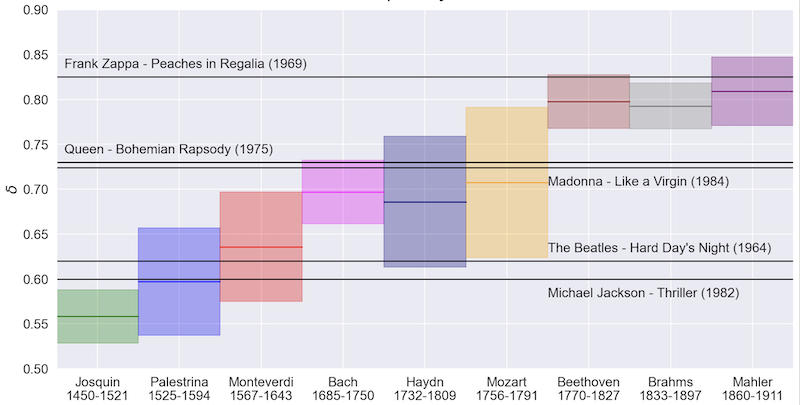-
-
Step-by-step course guide
-
What you will learn in this course
-
About the course: David Kinney & Simon DeDeo
-
Introducing the course Teaching Assistant
-
Join the discussion
-
Calendar & Deadlines
-
-
-
Introduction to Humanities Analytics
-
-
-
-
Analyzing "Excellence" in the Humanities
-
-
-
-
-
-
Case Study: Capitalism & Democracy
-
Chapter 5 part I Overview
-
The Marriage of Capitalism & Democracy part 1
-
Test Your Knowledge part 1
-
Test Your Knowledge part 1: Explanations
-
Chapter 5 part 2 Overview
-
The Marriage of Capitalism & Democracy part 2
-
Test Your Knowledge part 2
-
Test Your Knowledge part 2: Explanations
-
Assignment: Case Study: Capitalism & Democracy
-
-
-
-
-
Measurement & Operationalization
-
-
-
A Philosophical Approach to Probability
-
-
-
Guest Lecture: Marco Buongiorno Nardelli
-
-
-
-
Getting Started with Scientific Programming
-
-
-
Application: Blurbs, the Culture Industry & the Uses of Literature
-
Final Assignment
-
-
-
Guest Lecture: Nan Z. Da
-
-
-
Wrap-Up
-
What's Next
-
12.1 Guest Lecture: Marco Buongiorno Nardelli » Test Your Knowledge: Explanations
Q1. How was the distance between two chords determined in constructing the Bach chorale network?
A. By an arbitrary process; the distances have no meaning.
B. By the similarity of the notes that comprise the two chords.
C. By the time (bars) between the two chords in the score.
D. By the number of times the two chords appear in the score, ie. more frequent chords are closer in the network.
Correct answer: (B) Although not extensively described in the lecture, in order to establish the distance between chords, each is converted into a numeric notation termed a "pitch class set". This numeric notation then allows for the calculation of the difference between two pitch class sets, with difference then translated to distance in the network: a larger numerical difference equates to greater distance. This difference, and distance, only rely on the similarity or difference between the chords and do not account for temporal dynamics (C) or how often chords occur (D). While some network graphs assign edge lengths arbitrarily (A), this is not the case in the example discussed.
Q2. One difference between the Bach chorale and the algorithm-generated chorale is that Bach repeats sequences of two successive chords more often than the algorithm. Why didn't the algorithm repeat sequences of two successive chords more often?
A. The algorithm was designed to find the shortest circuit through the network that passed through each edge.
B. The algorithm was designed to find a random path through the network that passed through each edge.
C. The algorithm was designed to find a path through the network that starts and ends at the same node.
D. All of the above.
Correct answer: (A) The algorithm that produced the score was designed to find the shortest possible circuit through the chord network that visited each edge (conntection between two chords) at least once, ie. solve the Chinese Postman/person Problem. A random path (B), without constraints on how many times an edge or node could be visited or on path length, might, indeed, repeat successive chords many times – unlike the score that the algorithm produced. The "circuit" condition – starting and ending at the same node – of both the solution (A) and option (C) is not necessarily relevant to the repetition of successive chords, though it is a condition of the traditional Chinese Postman/person Problem.
Q3. Based on the measure of complexity introduced in the lecture [50:05], which of the following statements is true?
A. The works of Monteverdi are more surprising than Queen's Bohemian Rhapsody.
B. Madonna's Like a Virgin and Mahler's works, generally, contain a similar amount of information
C. Beethoven's works generally have a lower entropy than those of Brahms.
D. Mozart's works show a larger variation in their individual complexity compared to those of Beethoven.
Correct answer: (D) The measure of complexity introduced equates "complexity", "information", and "surprise" to the measurable property of "entropy". In the graph shown in the lecture (see below), the complexity increases from bottom to top on the y-axis. The height of the boxes indicates the variability in each composer's repertoire, compared to a single value for the modern popular music pieces included. By looking at the graph, one can see that options (A), (B) and (C) are all false – their inverses are true – and only option (D) is supported by the information in the graph.

